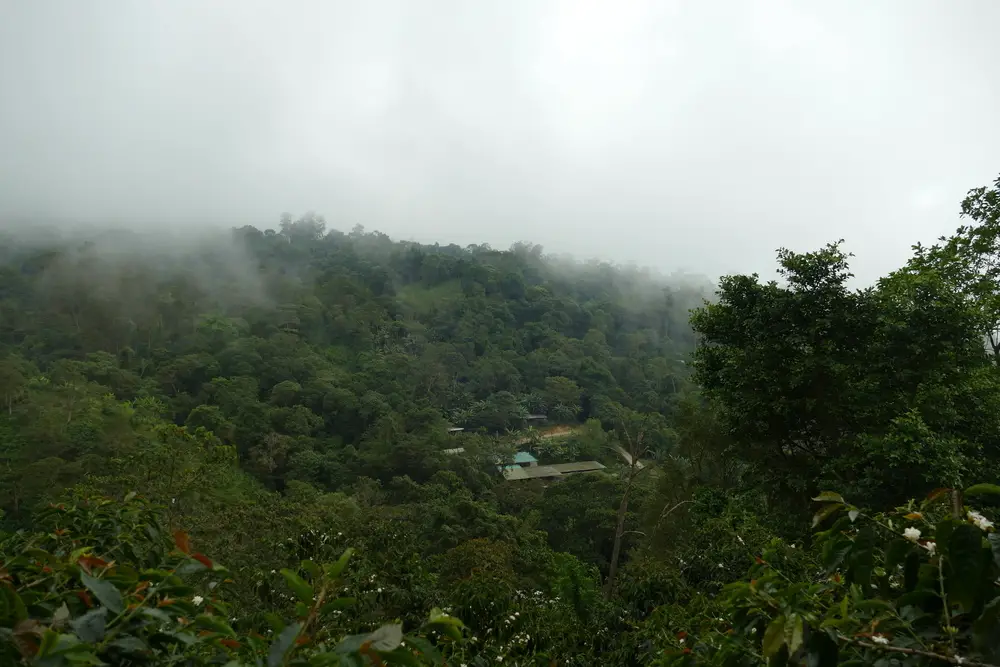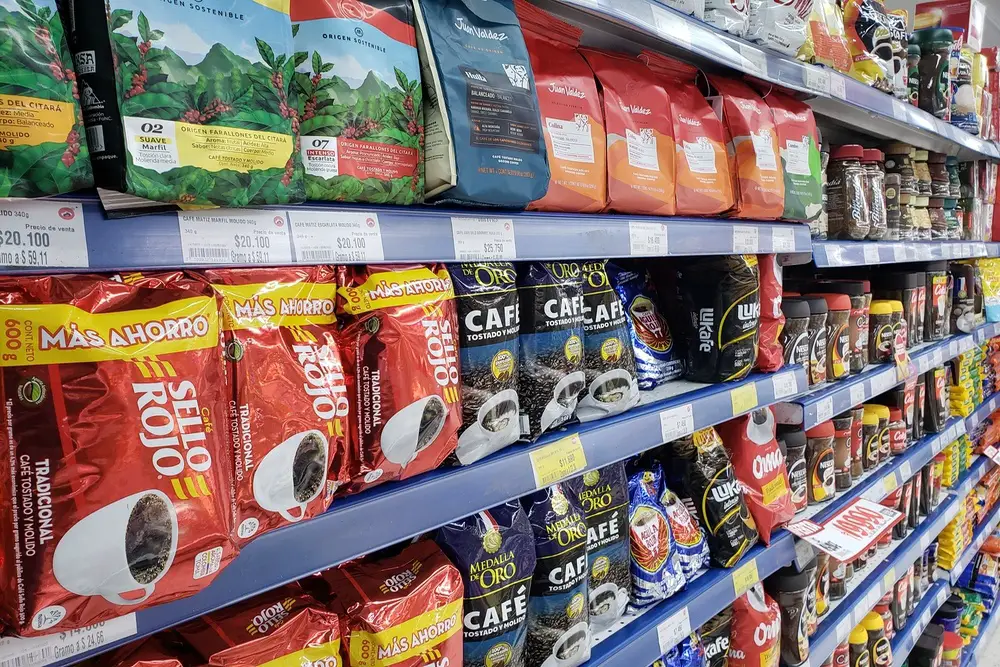Brazil is the largest coffee producer in the world. In this South American country are currently 30% of the world’s coffee is produced. Brazil is also one of the countries with the highest absolute and per capita consumption.
Table of Contents
Coffee comes to Brazil (18th century)
Coffee is thought to have been introduced to colonial Brazil in the early 18th century by the navigator Francisco Melo Palheta, who apparently introduced the seeds after returning from a voyage from French Guiana.
There is even a legend about it: the Portuguese sailor is said to have seduced the wife of the governor of Guyana so that she would help him smuggle coffee seeds to Brazil. And apparently Palheta’s plan worked, because the sailor managed to smuggle a lot of coffee seeds across the border.
One has to consider that coffee cultivation in America at that time was practiced almost exclusively in the French colonies, since it was the French who introduced the coffee plant to the new continent. Hence the great interest of other colonial powers such as Portugal in acquiring seeds and starting cultivation as well.
Shortly after Melo Palheta’s heroic deed, coffee was already being grown in Brazil. Originally, however, the consumption of the drink was reserved for the Portuguese settlers, as only they could afford the drink.
The decline in mining activity and the 19th century
The introduction of coffee in Brazil coincided with a decline in mining productivity, so efforts quickly focused on agricultural production.
Thus, the first coffee plantation in Brazil was opened in 1770 in the state of Rio de Janeiro, but production did not bring real profits until the 1800s, when Brazil entered the European and American markets.
At that time, the fledgling nation of the United States was craving a larger quantity of coffee. The latter is a bit strange, since before independence, tea was consumed in the Thirteen Colonies (United States), as in all British colonies.
However, during the war the idea that tea drinking was unpatriotic became popular, as tea was the flagship of British trade. And the independence movement discouraged tea consumption as a symbol of “British hegemony”.
So American interest turned to coffee, and Brazil was there to meet that demand. As early as 1802, Brazil was becoming a major exporter of coffee, and by 1850 it had overtaken its main competitors on the continent: Guadeloupe, Jamaica and Cuba.
In this way, coffee cultivation spread across the entire Brazilian territory.
Everything fell in favor of Brazil
For most of the 19th century, the world demand for coffee was met by Asian countries. The fungus Puccinia graminis, commonly known as coffee rust, however, devastated large acres of coffee-growing area.
This meant that Asia was unable to meet the growing demand for coffee from Europe and the United States. Brazil, on the other hand, had coffee in abundance and soon became the world’s leading supplier.
Slave labor made the business even more profitable.
As the demand for coffee increased, so did the use of slave labor. It is estimated that around 2 million African slaves were used in the coffee industry and although slavery had been abolished since 1850, it was not until 1888 that it became official.
Thus, all profits from the exports went to both the Portuguese crown and various landowners of the time.
European immigration
The abolition of slavery was detrimental to coffee production as it was now more difficult to find experienced workers for the coffee industry. However, in the 1860s, a Brazilian senator named Nicolau Vergueiro is already trying to import workers from other countries.
In fact, Vergueiro had managed to get several families of Swiss origin to work inland on a coffee plantation in Brazil. The experiment didn’t last long, however, as the senator’s constant abuse of workers led to a revolution.
The model of unpaid work applied to the Swiss workers, which meant that they had to work for 3 to 7 years and received no wages. Instead, they received transportation, housing, and clothing, meaning they were basically slaves with slightly more rights than African slaves.
And of course, being free men, they had the right to quit their jobs (a luxury Africans didn’t have), and they did.
Other immigrants
Between the last third of the 19th and the first half of the 20th century, numerous European immigrants came to Latin America in search of better living conditions for themselves and their families.
Some of these immigrants decided to use their life savings to buy land to grow coffee and other crops. As a result, there were more and more coffee producers and coffee production increased rapidly and steadily.
In addition, these European immigrants came from countries where there was a culture of coffee consumption, such as B. Italy, so that in the following decades domestic consumption increased.
The expansion of the coffee industry in Brazil in the 20th
At the beginning of the 20th century, the Brazilian coffee industry reached the peak of its growth. By 1902 Brazil was producing 80% of the world’s coffee production and the plantations began a process of industrialization.
In addition, coffee cultivation was restricted to the cooler, higher-elevation areas of the country. This happened because Brazil devoted most of its production efforts to growing the Arabica variety, which requires a temperate climate and higher elevations to grow.
This is how the states of São Paulo and Minas Gerais became the most important centers of the Brazilian coffee industry.
Coffee has contributed to the development of several regions in Brazil.
Something very similar to what happened in the city of San Francisco in the United States happened in São Paulo in Brazil. During the gold rush, many people moved to the west coast of the United States in search of gold.
São Paulo was not about gold, it was about coffee because the whole region was ideal for growing this product. This attracted millions of immigrants from across the country and around the world, all hoping to make a fortune growing coffee.
Because of this, São Paulo has become one of the most cosmopolitan cities in the world.
Anything that goes up must go down again
The Brazilian industry held a privileged position in coffee production until the first three decades of the 20th century, particularly due to the decline in Asian production.
However, Brazil produced more coffee than it exported, increasing supply and consequently reducing the value of the product. In addition, production costs continued to rise, and the outbreak of World War II also hit Brazilian coffee exports hard, as demand for coffee fell sharply, especially in Europe.
In addition, the United States had expanded its influence on the Asian continent, particularly in countries like the Philippines, whose soil was suitable for growing coffee. In addition, several countries such as Indonesia and Malaysia saw their coffee production recover.
At the same time, countries like Colombia also took advantage of the temporary decline in Brazilian production. And while Brazil remains the world’s largest coffee producer, it no longer controls the market.
Domestic consumption increased
Although Brazilian coffee exports suffered, something had to be done with the surplus coffee in the country. Because of this, the government and Brazilian coffee producers encouraged the consumption of Brazilian coffee.
Although coffee has always been a popular drink in Brazil, it was only after coffee prices fell that Brazilians decided to make coffee their favorite drink. Back then, good quality Brazilian coffee was used to meet foreign demand, while the surplus was used for domestic consumption.
the coffee that Brazilians were consuming back then was pretty bad, and sugar had to be added to mask the overly bitter taste. This was due to poor roasting.
However, this coffee was very cheap and available to everyone. As a result, consumption has remained stable from the mid-20th century to the present day. If you want to learn more about coffee consumption in Brazil and the rest of the region, you should take a look at the article on coffee consumption in Latin America.
The 1990s and the innovation
From the start, Brazilian industry was characterized by strict state control of producers, which increased in the second half of the 20th century. However, since the early 1990s, the Brazilian government has relaxed regulations on the agribusiness.
This allowed farmers to experiment with their produce, making it easier to enter new markets. As a result, the Brazilian coffee industry had to innovate to serve different markets.
An example of this is the creation of new types of coffee, some of which even have a designation of origin, such as the Cerrado de Mineiro, the first coffee to receive this designation in the country. Brazil has also invested heavily in coffee research and new processing techniques.
That’s why the South American giant remains at the forefront of producing excellent quality coffee. By the way, if you want to know more about Brazilian coffee, you can read the article about the 10 best coffees in Brazil.
The beginning of the new millennium and the change in consumption habits in Brazil
Brazilians are unlikely to stop consuming cheap, low-quality coffee. Because cheap coffee has long been part of Brazilian culture. However, since the early 2000s, the country’s coffee sector has developed strategies to educate consumers about the different types of coffee, especially specialty coffee.
And it seems that these efforts are bearing fruit. Because in the last decade, the Brazilian public has started consuming better quality coffees. The purchase of coffee machines has also increased significantly in Brazil, as Brazilians traditionally prefer to drink coffee at home.
In addition, owning a coffee maker is considered a status symbol because most people cannot afford one. The truth is that the Brazilian tradition of drinking coffee with family or friends is not going to change. In fact, even in times of economic crisis, Brazilians do not give up their coffee.
Maybe that’s why more and more Brazilian coffee specialists are returning to their country to start a business. In fact, there has been a proliferation of independent bars, often run by small coffee producers who see a sea of growth opportunities in their country. After all, Brazil is undoubtedly still the country of coffee.



